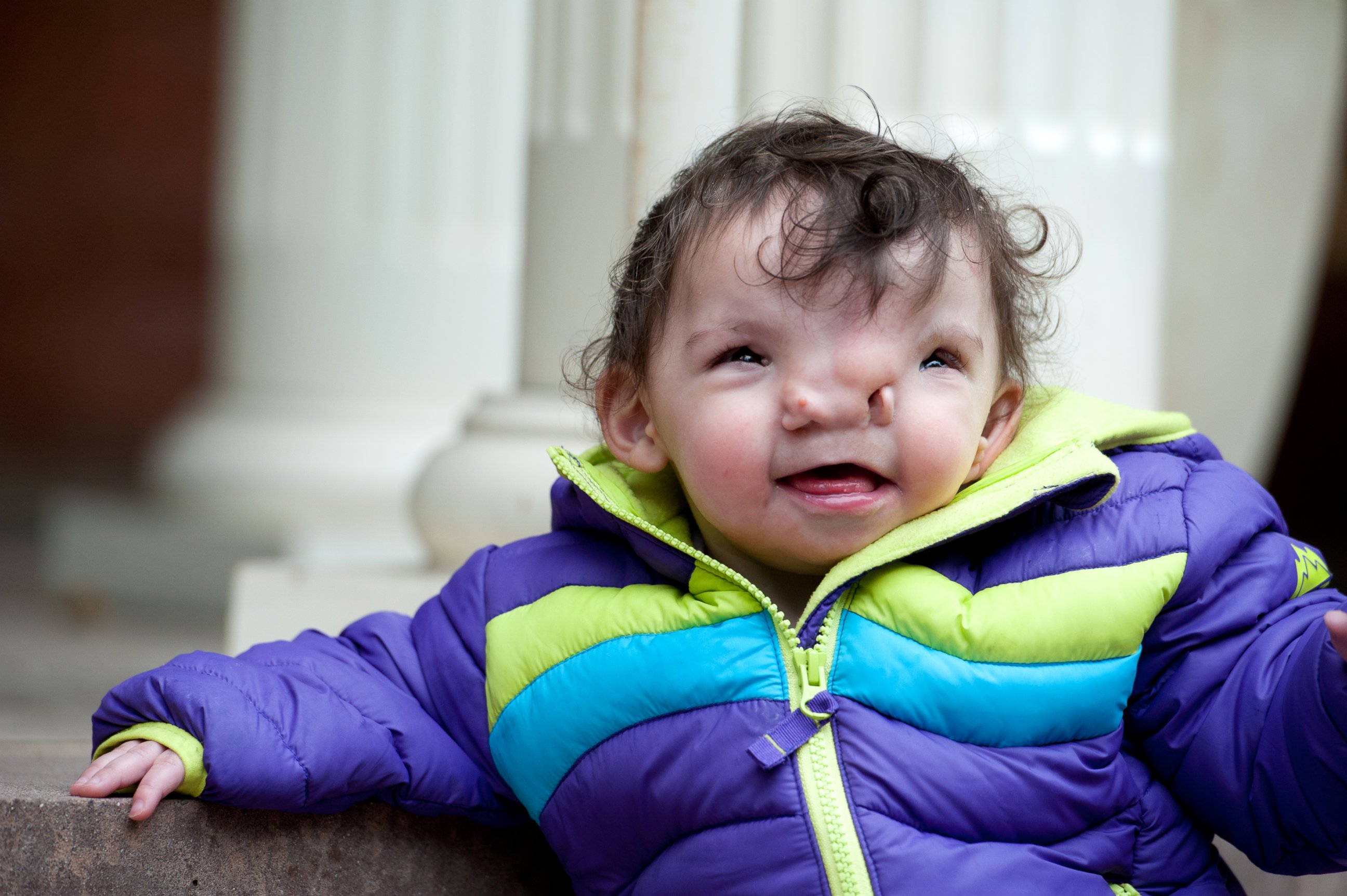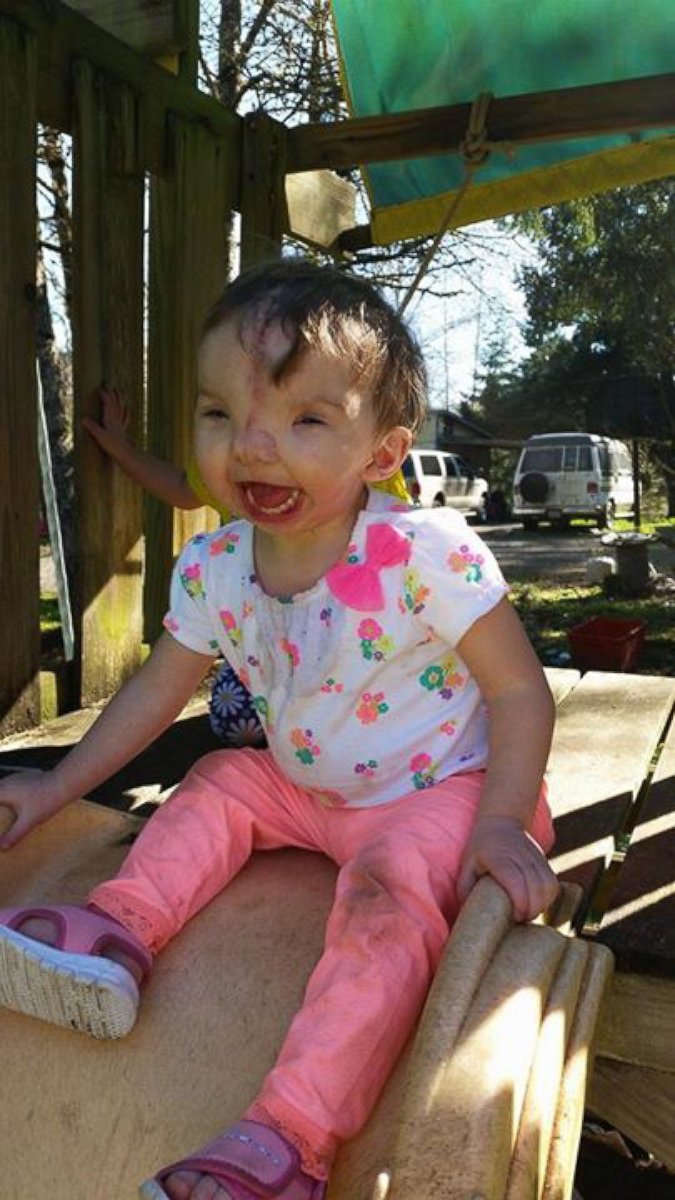Girl Now 'Smiling' After Major Surgery to Reshape Her Face
Violet Pietrok had her face reshaped thanks in part to a 3-D printer.
— -- A girl who had her face reshaped, thanks in part to 3-D printing, is now smiling and laughing again nearly six months after her operation, her family told ABC News.
Violet Pietrok, 2, has spent the past few months laughing and dancing with her twin sister and older siblings according to her mom, even as she recovers from major surgery to reshape her face.
"She’s fantastic. She’s taking it all in stride," Violet's mother, Alicia Taylor, told ABC News. "She’s so happy ... all the time. If she’s not smiling, she’s generally asleep or throwing a fit."
Violet underwent a major surgery in October at Boston Children's Hospital with both a plastic surgeon and neurosurgeon to help reshape her face after she was born with a rare condition called frontonasal dysplasia.
In Violet's case, the condition resulted in a widening of certain facial features, including the nose and space between the eyes and a large central cleft in her face.
Just 100 cases of frontonasal dysplasia have been documented, according to the National Institutes of Health.
Because of the unique way her skull was formed by the condition, Dr. John Meara, the plastic surgeon-in-chief at Boston Children’s Hospital, used a 3-D printer to create models of Violet's skull over time. Meara and his team knew they wanted to operate, but they had to be careful in how they approached the surgery so as to not interfere with her brain or other nerves.
"The value of the model like this is huge," Meara said in a video for Boston Children's Hospital. "This gives me the ability to see on this model better than I will in the operating room."

The operation was lengthy, going over six hours as Meara, along with a neurosurgeon and other members of the medical team, tended to the girl. The doctors even brought in the 3-D models to the operating room and when they ran into a complication, used the models to find a solution.
Meara told ABC News that the model was extremely helpful in practicing the surgery.
"This allows us to understand what needed to be modified or addressed on the model before making an incision or bone cuts in the [operating room]," Meara said. "For Violet, I actually modified my osteotomies [bone cuts] based on something that I was able to see happening in the model."
Violet’s mother said her daughter remains a happy child in the months after the surgery. While a recent complication in February meant Violet had to go back to the operating room for a procedure, Taylor said her daughter is doing well.
"She’s fantastic even with the surgery," said Taylor. "She still was just sweet and compliant and she tried to smile."
Meara said he's very excited with the surgery results and doesn't expect any major issues for Violet in the future.
"I have high hopes for her," Meara told ABC News. "She is so bright -- in both personality and cognitive ability. I will want to see her and follow up on her progress every year. At some point in the future she may require some revisions procedures."

Taylor said that her daughter will likely have more procedures as she grows up, including a rhinoplasty to add cartilage to her nose and another to help with her eyelids.
"We love her new face, but we miss her old face," Taylor said of Violet. "I was so worried that they were going to take her and she was going to be unrecognizable. ... I miss that little face because you love it."
Taylor said she wanted to share her family's story so that people would be aware of the condition and not be as shocked by it. "If you see someone staring at you and [they] turn and walk off, it makes you feel different and it will make her feel shunned," she said.
Instead, if children are pointing because they're confused or curious, parents should walk over and gently introduce themselves instead of pulling a child away or yelling at them for pointing, Taylor said.
"It would be far better if they introduce themselves and say, 'Hi, I’m so-and-so, I wondered if you can explain to [my kids] what happened,'" Taylor said.